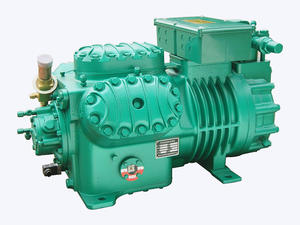At the core of the condensing unit’s function is its ability to reject heat absorbed by the refrigerant from the evaporator, which allows for the proper conversion of refrigerant pressure. When the refrigerant enters the condensing unit, it is typically in the form of a high-temperature, high-pressure gas. This gas is forced through the condenser coil or heat exchanger, where it releases the heat it has absorbed from the environment being cooled. As the refrigerant cools, it transitions from a gaseous state to a liquid. During this process, the condensing pressure is carefully regulated. The pressure of the refrigerant decreases as it loses heat and condenses, and the unit must maintain the correct condensing temperature to ensure efficient operation. If the pressure is too high, it suggests the system is overloaded or inefficient, leading to energy wastage.
The condensing unit is responsible for maintaining optimal condensing pressure within the system, which directly influences the system’s cooling efficiency. Condensing pressure refers to the pressure at which the refrigerant changes from a gas to a liquid, and it is a key parameter in determining the efficiency of the heat exchange process. The condensing unit ensures that the refrigerant is at the correct pressure when it enters the expansion valve or other components, which allows the refrigerant to flow smoothly and appropriately. Too high a pressure causes the refrigerant to stay in its gaseous state longer than necessary, resulting in inefficient cooling and increased energy consumption. Too low a pressure can cause the refrigerant to fail to properly absorb heat in the evaporator or leave the system in an undercharged state, reducing the system's overall capacity. The condensing unit’s role is critical in balancing these pressures for optimal performance.
Once the refrigerant is cooled and condensed into a liquid in the condensing unit, it then passes through an expansion valve or capillary tube, which causes a pressure drop. This reduction in pressure allows the refrigerant to expand and absorb heat in the evaporator coil. The condensing unit contributes to this process by ensuring that the refrigerant entering the expansion valve is at an appropriate high pressure for a smooth transition. The pressure differential created by the expansion valve is essential for the proper function of the evaporator, where the refrigerant evaporates and absorbs heat from the surrounding air or material.
To maintain consistent and accurate refrigerant pressures, condensing units are often equipped with advanced pressure control mechanisms. These include pressure switches, pressure regulators, and sensors designed to monitor and adjust the pressure within the system. The pressure switch is responsible for monitoring the pressure within the refrigeration system and activating the necessary components to maintain optimal pressure levels. If the condensing pressure rises above the set threshold, the pressure switch will trigger the fan to operate at higher speeds or may even activate the compressor in a more energy-efficient manner to help bring the pressure back to the desired level. Likewise, if the pressure falls below acceptable levels, the system may activate additional components to correct the imbalance.
The condensing unit must adapt to fluctuations in ambient temperature, as external conditions significantly influence refrigerant pressure. As the temperature in the surrounding environment rises or falls, it directly impacts the condensing pressure and the ability of the unit to dissipate heat. During hot weather, the condensing pressure will naturally rise, which could require the unit to operate at higher capacities to maintain the same cooling effect. The condensing unit compensates for these changes through the fan speed adjustments, heat exchanger modifications, or compressor cycle changes, ensuring it can handle the varying external conditions. In cold weather, lower ambient temperatures reduce condensing pressures, and the unit must adjust accordingly to ensure that the refrigerant still condenses efficiently.

 English
English عربى
عربى 简体中文
简体中文












